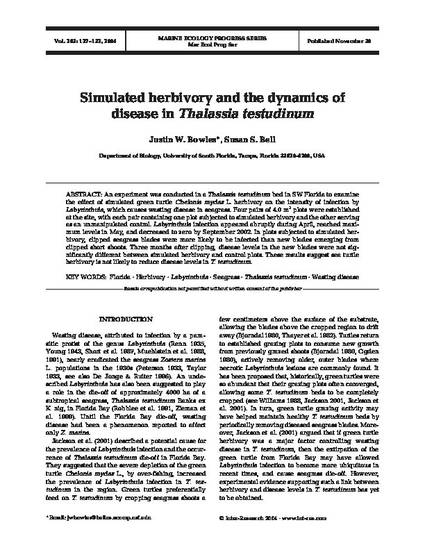
- Florida,
- herbivory,
- Labyrinthula,
- seagrass,
- Thalassia testudinum,
- wasting disease
An experiment was conducted in a Thalassia testudinum bed in SW Florida to examine the effect of simulated green turtle Chelonia mydas L. herbivory on the intensity of infection by Labyrinthula, which causes wasting disease in seagrass. Four pairs of 4.0 m(2) plots were established at the site, with each pair containing one plot subjected to simulated herbivory and the other serving as an unmanipulated control. Labyrinthula infection appeared abruptly during April, reached maximum levels in May, and decreased to zero by September 2002. In plots subjected to simulated herbivory, clipped seagrass blades were more likely to be infected than new blades emerging from clipped short shoots. Three months after clipping, disease levels in the new blades were not significantly different between simulated herbivory and control plots. These results suggest sea turtle herbivory is not likely to reduce disease levels in T. testudinum.
Marine Ecology Progress Series, v. 283, p. 127-132
Available at: http://works.bepress.com/susan_bell/6/
